| Forster Art Complex
Ross Gallery: April 1 - 5, 2024 |
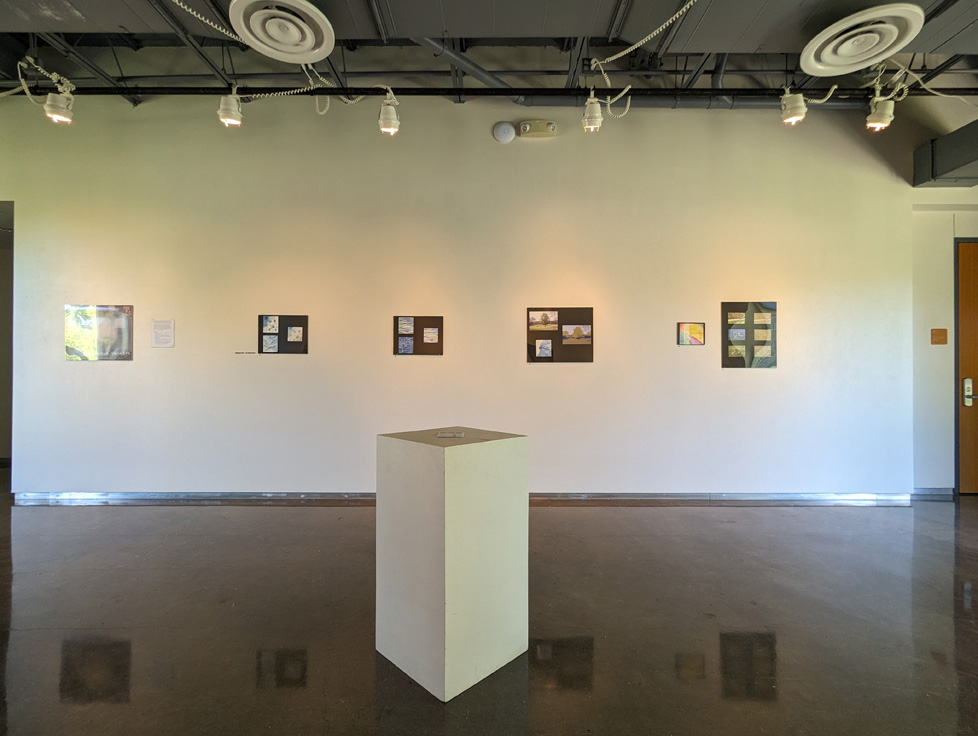 |
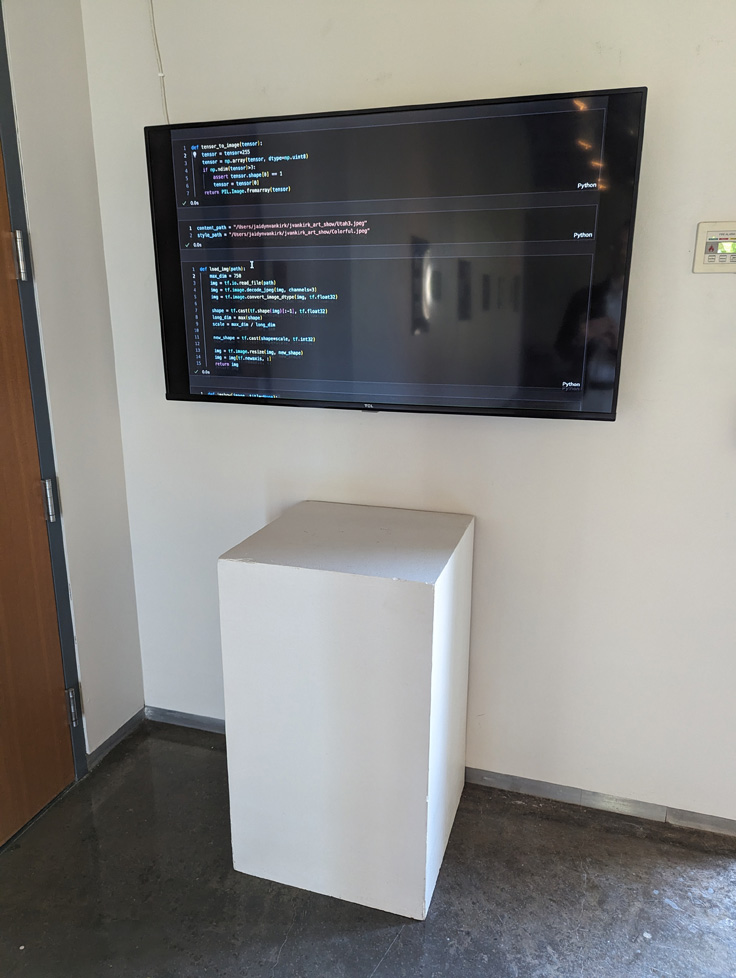 |
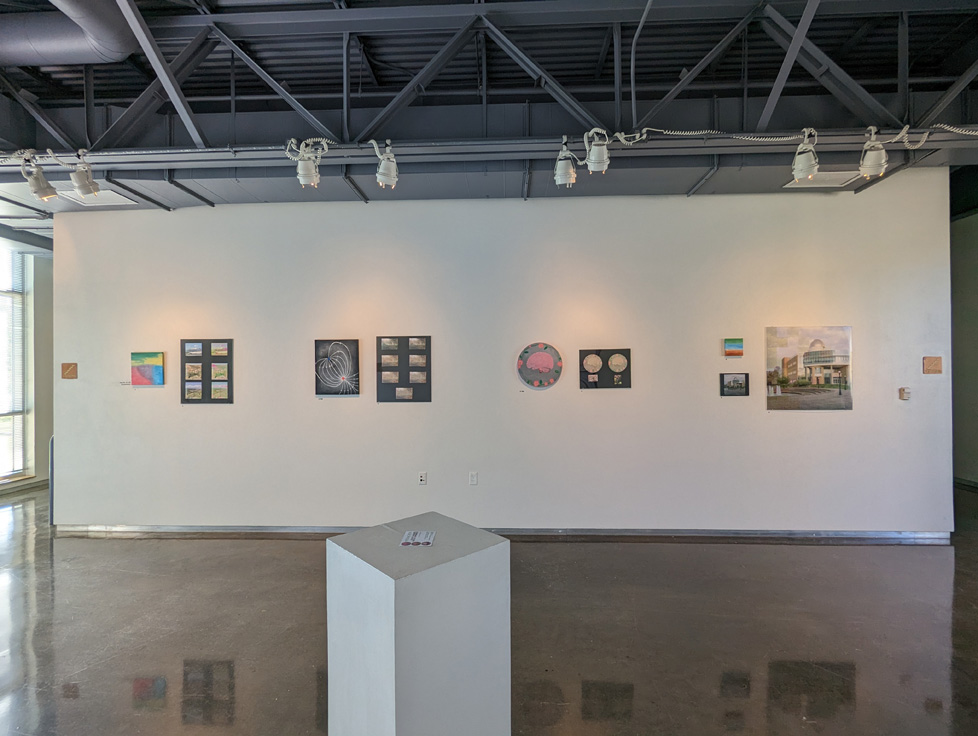 |
 |
Over the summer, during my undergraduate research experience, I
learned humans do not understand what happens inside an artificial
neural network. Similar to humans, Al agents are presented with
data and analyze it to make informed decisions in future
situations. Yet, during this training and decision process, humans
are not fully aware of the inner workings of the Al agent. For my
senior conference Interaction, I want to explore using artificial
neural networks in my art.
I programmed a style transfer artificial neural network with the
help of a tutorial on TensorFlow (listed below). It uses a
pre-trained neural network that identifies edges on the original
pieces (essentially the important components) and trains a neural
network on another art piece received. The model then applies the
style of the art piece to the original piece while trying to avoid
distorting the main components. The output is the model's attempt
to apply the style to the original photo. I use photography,
watercolor, acrylic, and oil paintings to see what my model could
produce. I explored pattern recognition, color application,
switching inputs, and using Al as a tool for larger photos. My
ultimate goal is to show some interesting things Al can produce as
a collaborator. Below, I have highlighted certain elements of each
piece.
(All pieces are meant to be viewed from left to right.)
Tutorial:
https://www.tensorflow.org/tutorials/generative/style_transfer |
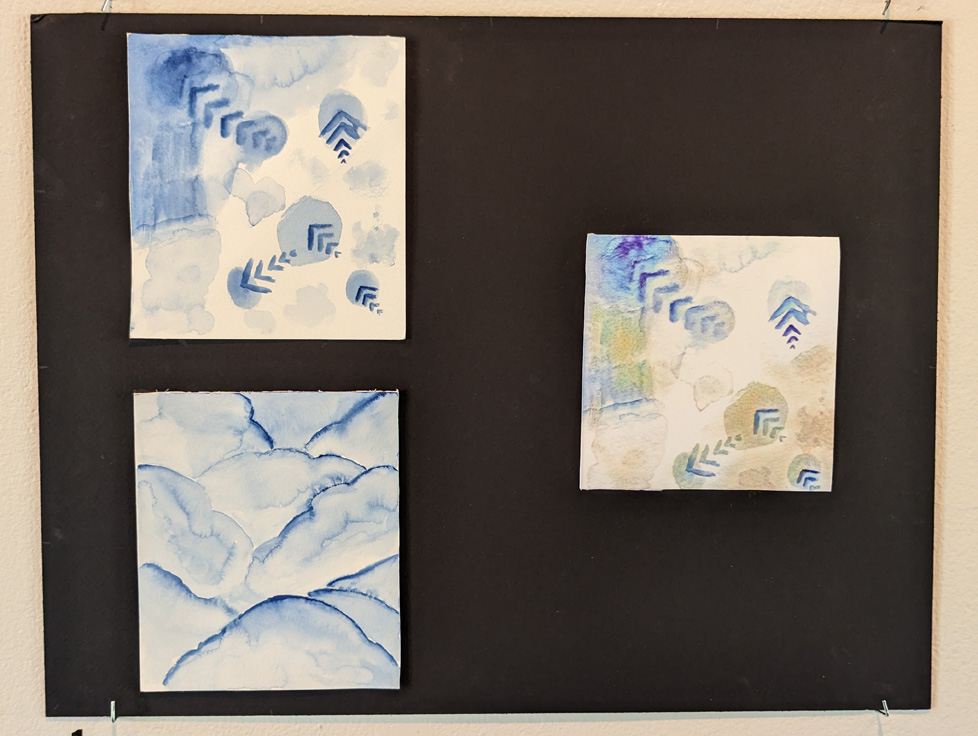
Watercolor Experiment 1
Despite using a photo with the same color, it produced an odd
green, yellow color in the bottom right corner. |
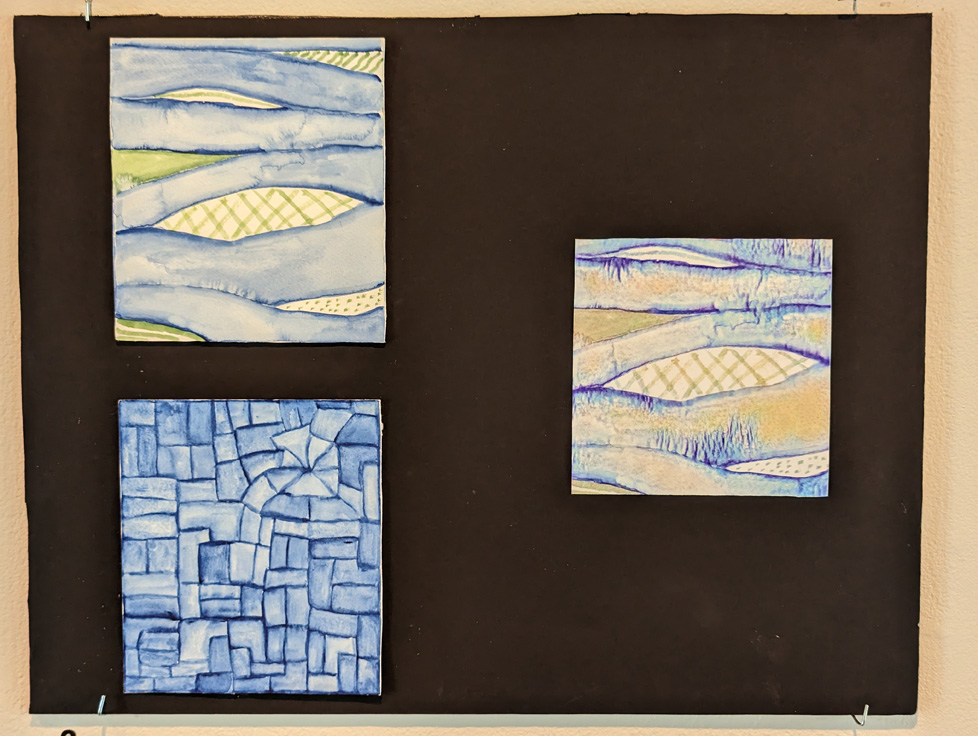
Watercolor Experiment 2
The Al recognized the linear pattern. You can see it emphasize
some of the faint lines of the original piece on the top. |

Watercolor Experiment 3
This piece is my first attempt at applying my Al to a larger
photo. It ultimately gave a blue tint to the photo and made the
photo look like it was on watercolor paper. |

Watercolor Experiment 4 (1 of 2) |

Watercolor Experiment 4 (2 of 2)
I attempted to apply the pastel watercolor from the piece to
photos. Perhaps the green of the original photos or the lightness
of the watercolor caused the colors to come out unsaturated and
muddy. |
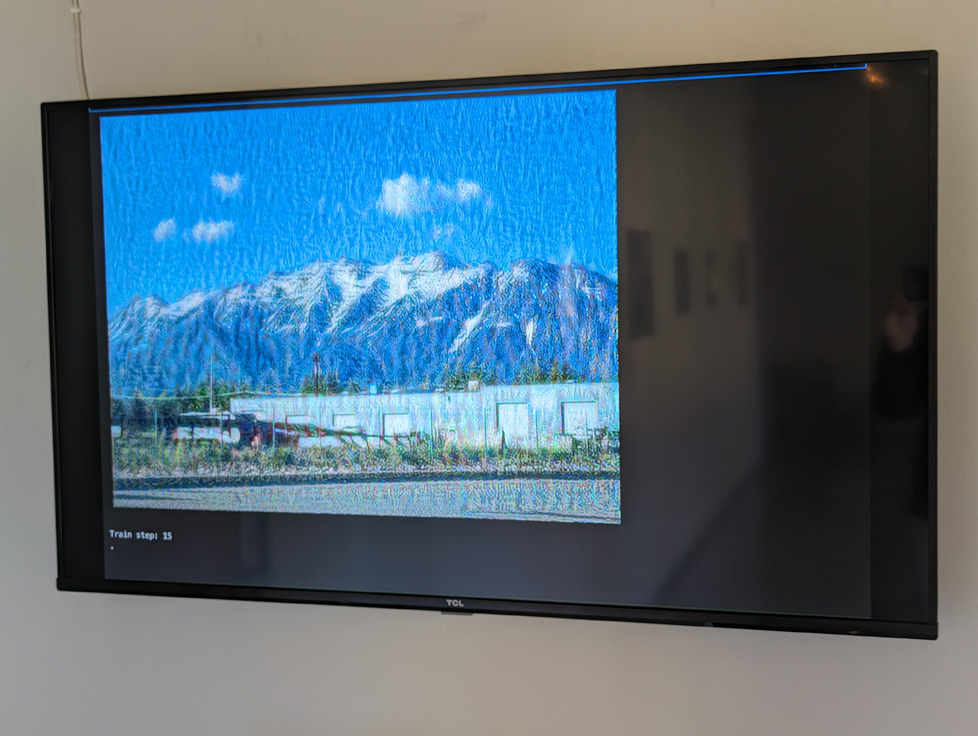
(click image for link to video on YouTube) |

Acrylic and Oil Paint Experiment 1 (1 of 2) |
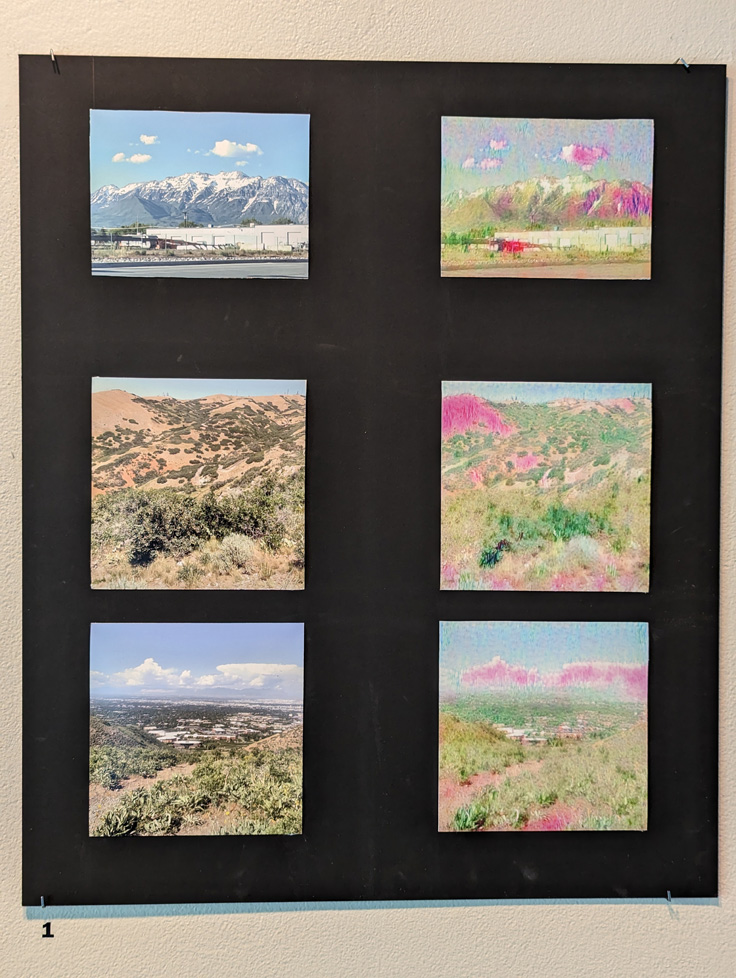
Acrylic and Oil Paint Experiment 1 (2 of 2)
The colors from the acrylic came out brighter than the watercolor. |
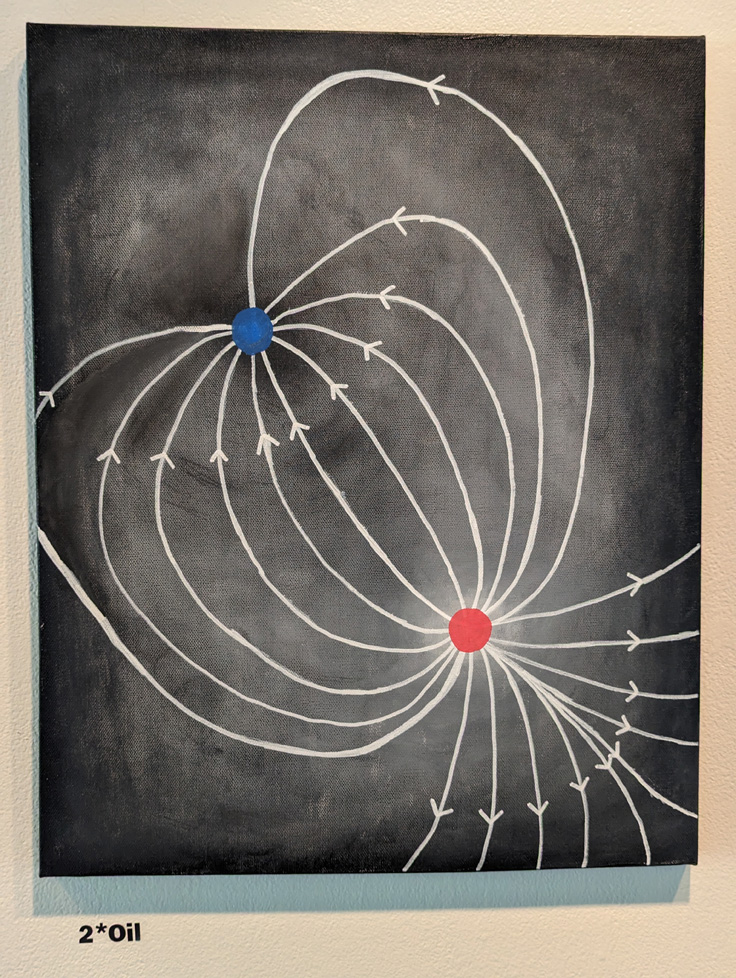
Acrylic and Oil Paint Experiment 2*Oil (1 of 2) |
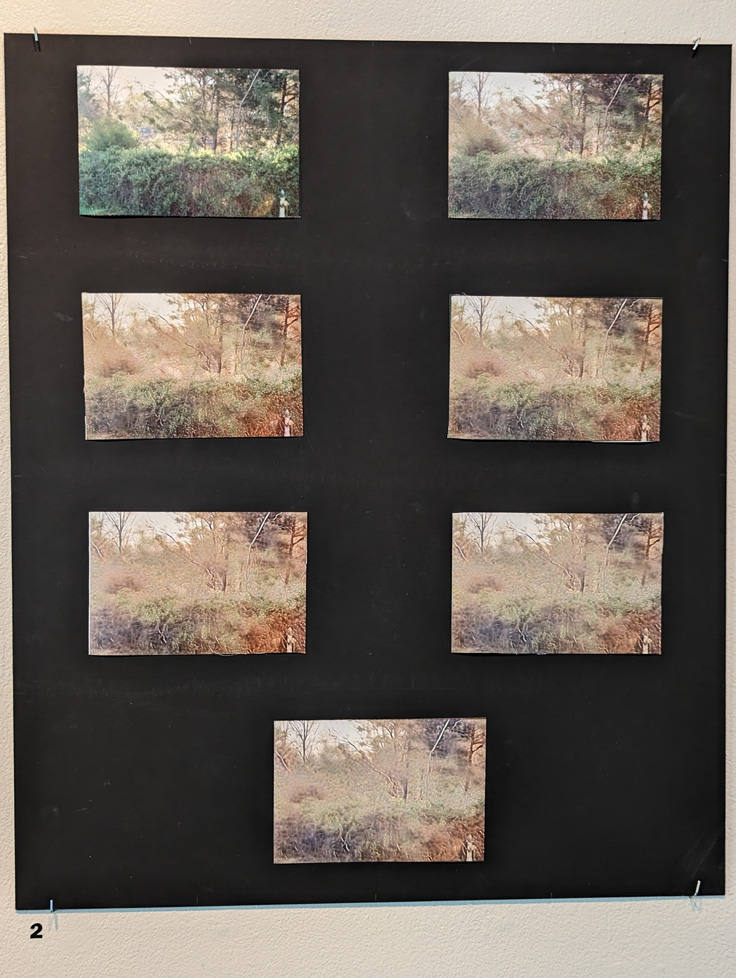
Acrylic and Oil Paint Experiment 2 (2 of 2)
This transfer is another piece where the Al recognized a pattern.
You can see a white line, similar to the painting, form in the top
right branch of the photo. |
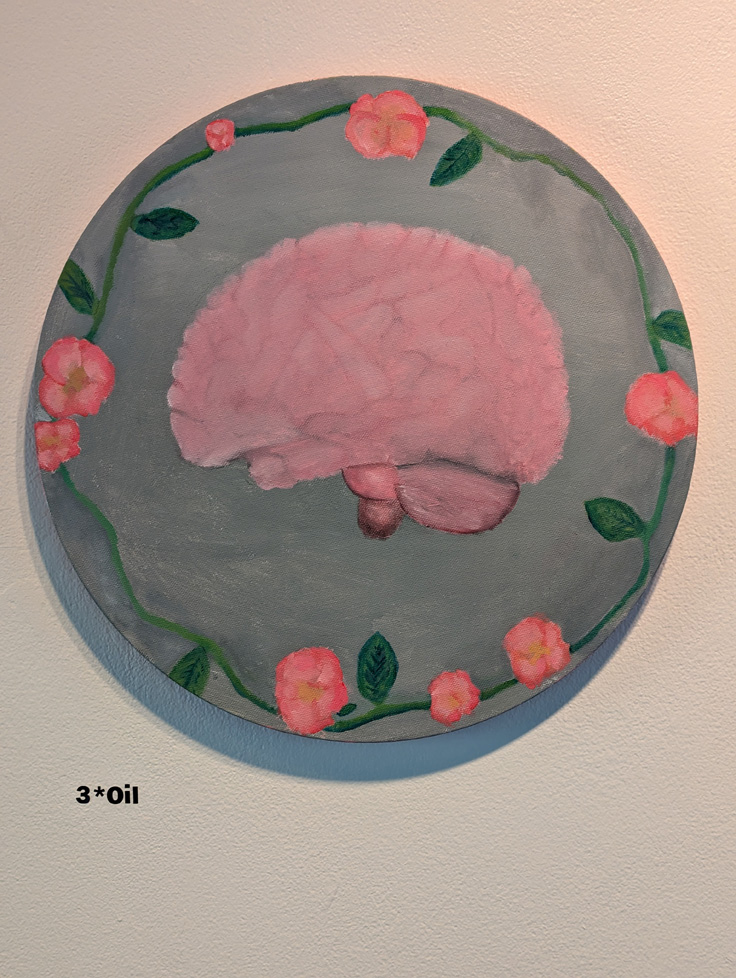
Acrylic and Oil Paint Experiment 3*Oil (1 of 2) |
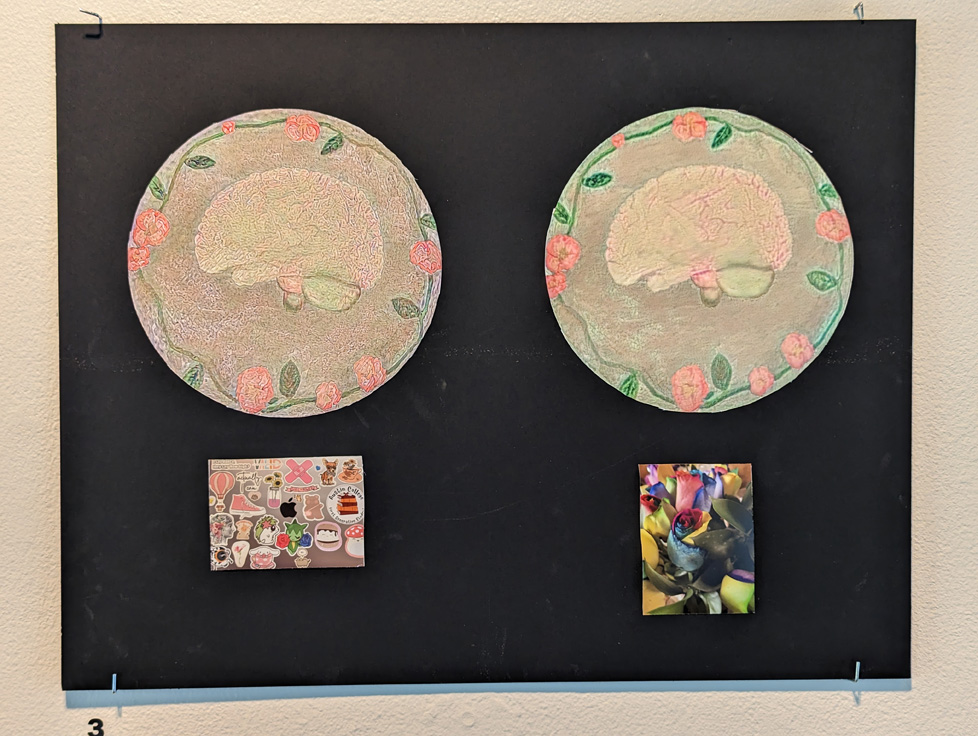
Acrylic and Oil Paint Experiment 3 (2 of 2)
This piece was a trial to see what would happen if I switched the
inputs. Surprisingly, a prominent pattern was still applied. |

Acrylic and Oil Paint Experiment 4 (1 of 3) |

Acrylic and Oil Paint Experiment 4 (2 of 3) |
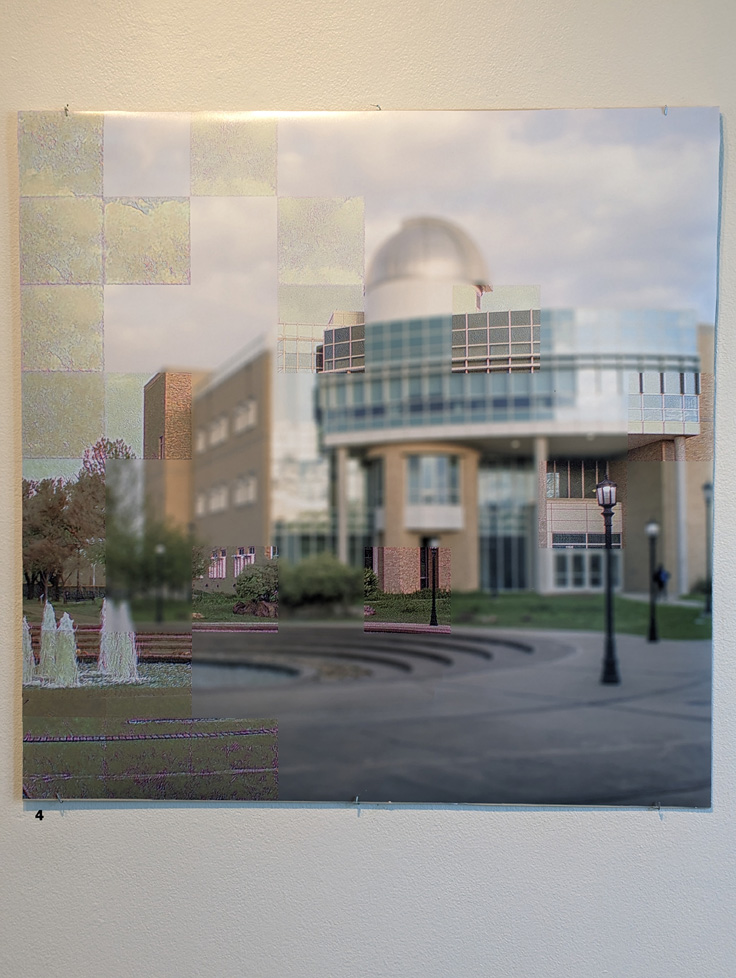
Acrylic and Oil Paint Experiment 4 (3 of 3)
I wanted to create a bigger photo, but the large amount of data
made this difficult. I finally settled on splitting the photo into
larger chunks and attempted to create a gradient effect, where the
style is applied heavily to the left side. (I did this by limiting
the amount of iterations the original photo went through the
artificial neural network.) |